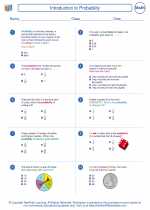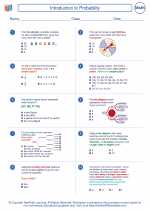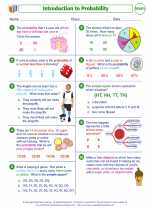Pie Chart Explanation and Study Guide
What is a Pie Chart?
A pie chart is a circular statistical graphic that is divided into slices to illustrate numerical proportion. The arc length of each slice is proportional to the quantity it represents. It is a useful tool for representing data and comparing different categories or groups in a data set.
Creating a Pie Chart
To create a pie chart, follow these steps:
- Collect Data: Gather the numerical data that you want to represent in the pie chart. This could be survey results, sales figures, or any other set of data.
- Calculate Percentages: Calculate the percentage that each category represents of the total data set. This is typically done by dividing the value of each category by the total and multiplying by 100.
- Draw the Chart: Use a protractor or drawing software to draw a circle. Divide the circle into slices, with each slice representing a category. The size of each slice should be proportional to the percentage it represents.
- Add Labels: Label each slice with the category it represents and its percentage value.
Interpreting a Pie Chart
When interpreting a pie chart, keep the following points in mind:
- Proportional Representation: Each slice of the pie represents the proportion of the whole data set that the category represents. The larger the slice, the greater the percentage of the whole it represents.
- Comparison: Use the pie chart to compare the sizes of different categories. It is easy to see at a glance which category is the largest or smallest.
- Limitation: Pie charts are not suitable for comparing more than a few categories, as the slices become too small to accurately interpret.
Example
Suppose you conducted a survey to find out people's favorite ice cream flavors. The data collected is as follows:
| Flavor | Number of Votes |
|---|---|
| Vanilla | 30 |
| Chocolate | 20 |
| Strawberry | 15 |
| Mint Chip | 10 |
After calculating the percentage for each flavor, you can create a pie chart to visually represent the data.
Conclusion
A pie chart is a useful tool for representing data in a visually appealing and easy-to-understand way. By following the steps for creating and interpreting a pie chart, you can effectively communicate numerical proportions and make comparisons between different categories.
[Pie Chart] Related Worksheets and Study Guides:
.◂Math Worksheets and Study Guides Seventh Grade. Introduction to Probability

 Worksheet/Answer key
Worksheet/Answer key
 Worksheet/Answer key
Worksheet/Answer key
 Worksheet/Answer key
Worksheet/Answer key
 Worksheet/Answer key
Worksheet/Answer key
